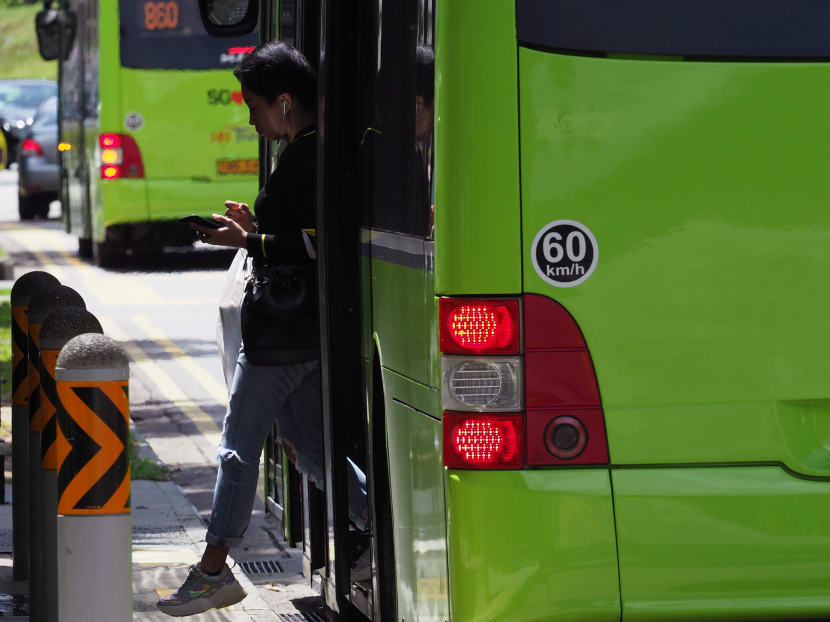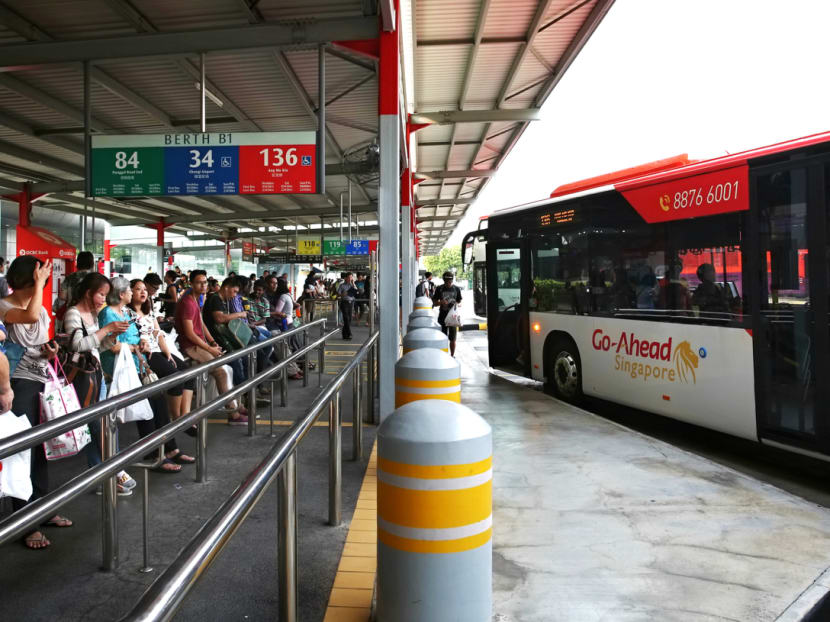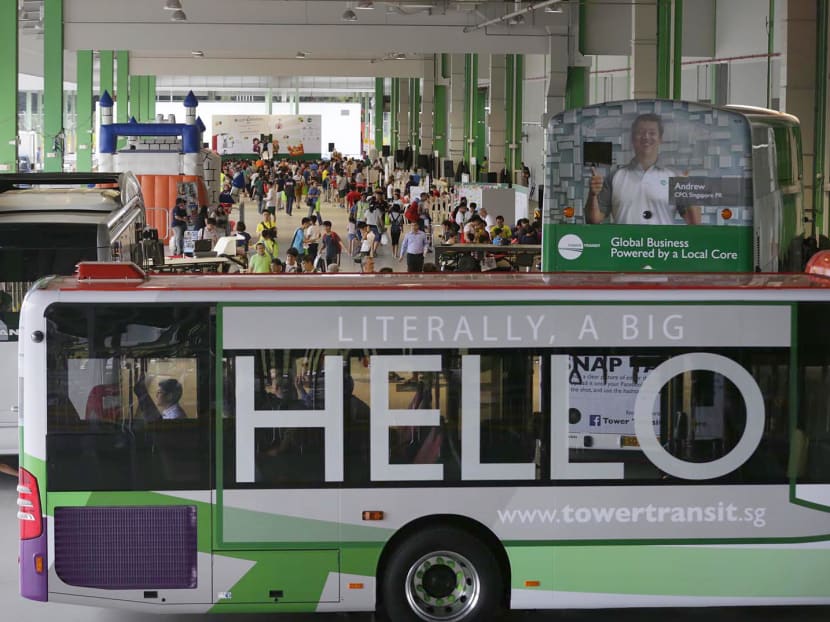The Big Read in short: Happier bus drivers and commuters, at a cost
Each week, TODAY’s long-running Big Read series delves into the trends and issues that matter. This week, we look at the bus contracting model that was introduced in Singapore three years ago. While it promised better bus service standards for commuters and better working conditions for drivers, some experts have raised questions about its sustainability. This is a shortened version of the feature.

When the bus contracting model was introduced in Singapore three years ago, it promised better bus service standards for commuters and better working conditions for drivers. However, some experts have questioned whether the model is sustainable.
Each week, TODAY’s long-running Big Read series delves into the trends and issues that matter. This week, we look at the bus contracting model that was introduced in Singapore three years ago. While it promised better bus service standards for commuters and better working conditions for drivers, some experts have raised questions about its sustainability. This is a shortened version of the feature, which can be found here.
SINGAPORE — Four years ago, whenever Ms Natalie Ng took bus service 174 from her home in Jalan Jurong Kechil to the area where Beauty World MRT Station now stands, she would have to wait around 15 to 20 minutes for her bus to come along at around 9am.
However, these days, Ms Ng, 24, who works in a creative agency, has noticed a “slight improvement” in the frequency of the service, and says she has to wait for only about 10 minutes.
The changes that Ms Ng had observed coincided with a push by the authorities to improve service levels in the public transport industry, which saw the introduction of the bus contracting model in 2016.
Under the model, operators bid for a package of routes through competitive tendering. The Government owns all fixed and operating assets and retains fare revenue while bus operators earn a fee for running services.
The Land Transport Authority (LTA) determines the bus services to be provided and sets the service standards. This enables bus services to be more responsive to changes in ridership and commuter needs.
This is a departure from the previous model where the two incumbent operators — SBS Transit (SBST) and SMRT — pocketed the fare revenue while the Government and the operators owned operating assets such as depots and buses.

Since LTA launched the bus contracting model, it has tendered out four bus packages, with the last contract for the Bukit Merah package secured by SBST last year.
Two new operators have also entered the market, with London-based company Tower Transit winning the Bulim package and British transport operator Go-Ahead winning the Loyang package in 2015.
The new model has brought an improvement in service levels, as well as better starting pay for bus captains.
“All trunk bus services are now scheduled at headways of 15 minutes or less during the morning and evening peak periods, compared to the pre-bus contracting model standard of 30 minutes or less,” said the LTA in response to TODAY’s queries.
Headway refers to the amount of time taken for the next bus service to arrive at a stop after the previous one has left.
Other benefits include:
Over 2,000 new buses added to roads since 2014
15 new bus services introduced
75 per cent of bus services less crowded during peak hours
25 per cent reduction in waiting time for 292 high-frequency buses
While the industry appears to have achieved some stability with four operators in the market, some experts have raised questions about the sustainability of the model.
Fare revenues have not risen in tandem with bus operating expenditure.
One year into the model’s implementation, operating expenditure for buses alone, which consists of the contract with the winning bus company as well as the upkeep of assets among others, was S$979 million.
The expenditure was supported by S$423 million in grants, as well as S$513 million in operating income.
Since then though, the operating expenditure for buses has shot up to S$1.925 billion. Government grants came up to S$1.024 billion while fare revenue rose to S$834 million.
This essentially means that less than half of the operations for buses here are supported by revenues from fares, with the majority coming from Government subsidies instead.
With bus passenger ridership increasing about one to two per cent each year since 2015, some analysts say that having the Government to continue subsidising the industry is not a sustainable option and commuters need to cough up their share to maintain service standards.
Urban transport expert Park Byung Joon, who is from the Singapore University of Social Sciences, said that commuters could not expect the same level of service standards while maintaining the same level of bus fares.
The “simple fact” is that it takes that much money to run buses frequently, he said. That, coupled with better pay for drivers, will drive the total expenses up.

Associate Professor Park added that if the public wants better services, it should be prepared to pay more.
In July, Transport Minister Khaw Boon Wan had signalled the need for higher public transport fares, saying that it would be unsustainable to continue relying on government subsidies to fund public transport infrastructure. Mr Khaw said then that subsidies given out “have exceeded their intended scope”.
However, Mr Lim Biow Chuan, a Member of Parliament for Mountbatten Single Member Constituency and a member of the Government Parliamentary Committee (GPC) for Transport, said that if it eventually comes down to raising fares to reduce operating cost, there will be no pleasing everyone.
He noted "a reasonable person would conclude whether the increase is fair or not“, but there are also "those in the extreme" who "want good, fast services but they don’t want to pay for it".
"And I don’t think that’s reasonable," he said.
While the Government has generally turned to fare hikes as a way to defray costs of bus operations, analysts offered a few suggestions on other ways to avoid passing on the costs to commuters.
These include optimising bus services here by introducing more priority lanes for buses to minimise bus stop delays and speed up buses or by bringing in revenue through other sources such as advertising on the body of buses or bus interchanges.
Transport expert Loh Chow Kuang, a former secretary of the Public Transport Council (PTC), said that operating costs could also be lowered through tweaks to the tender process.
By attracting more qualified bus operators to bid, especially those from Asia who tend to put in competitive bid prices, lower service fees could be paid to contracted bus operators.
However, Assoc Prof Park noted that interest from overseas operators seems to be waning, possibly from their inability to compete against homegrown companies on cost.
At the same time, Dr Walter Theseira, a transport economist at SUSS and a Nominated Member of Parliament, said it would be inefficient to have too many operators, with each operator only having one or two packages, as there will be little opportunity for economies of scale or business continuity.
However, Mr Loh, who is also the president of transport consultancy firm Singapore Urban Transport International, said that the latest tender which is the first to offer two packages at the same time, is the way forward for bus contracting as it will provide companies with the economics of scale and make it more attractive to bid for.
New tenders were called by the LTA last month for operators to run a total of 56 bus routes — 29 routes as part of the Bulim package and 27 routes as part of the Sembawang-Yishun package.
When asked if they intended to remain in Singapore, both Tower Transit and Go-Ahead stressed that they had positive experiences here and were looking to stay for the long term.











